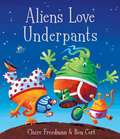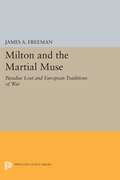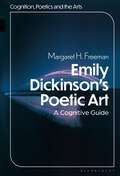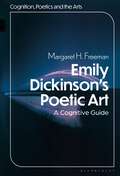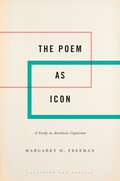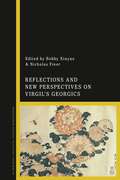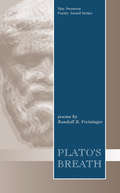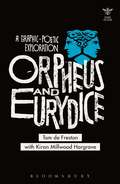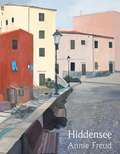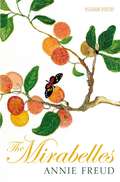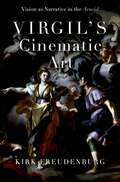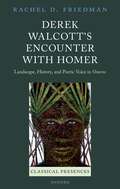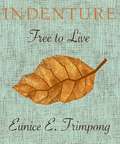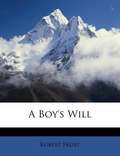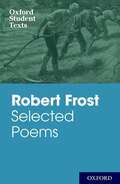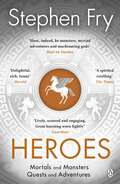- Table View
- List View
Fictions of Witness in the Confessio Amantis (The New Middle Ages)
by Joel FredellFictions of Witness in the Confessio Amantis details the first years of the Confessio’s material history and offers a major revision to a century’s old narrative of political revision and conversion around the trauma of 1400. Joel Fredell argues for “late stage” revisions by Gower to his great poem in Middle English from the late 1390s up to Gower’s death in 1408. This approach, new to scholarship for Ricardian and Lancastrian literature, demands profound re-evaluation of Gower's poetic persona and its entanglement in the opening and closing books of the Confessio. It offers a reassessment of the political and literary relationships between versions dedicated to Richard II and Henry IV. It repositions Gower's laureate status in a London world of deluxe book production that created a canon of Ricardian poets linked to their fifteenth-century inheritors. Finally, it identifies for the first time how late medieval authors designed their poetry as fictional artifacts that witness history from quasi-chronicles like Maidstone’s Concordia or Richard the Redeless, quasi-petitions like the Lollard “Petition to the King and Parliament,” quasi-epistles that begin so many texts, quasi-transcripts such as the Record and Process of the Deposition of Richard II, and so on.
Aliens Love Underpants
by Claire Freedman Ben Cort"Aliens love underpants, in every shape and size, But there are no underpants in space, so here's a big surprise. . . . " This zany, hilarious tale is delightfully brought to life by Ben Cort's vibrant illustrations. With a madcap, rhyming text by award-winning Claire Freedman, this is sure to enchant and amuse the whole family! Perfect for joining in, this story is fantastically fresh and funny - you'll laugh your pants off!
Milton and the Martial Muse: "Paradise Lost" and European Traditions of War
by James A. FreemanCombining historical scholarship with literary criticism, James Freeman provides a comprehensive study of the pro-war tradition that dominated Renaissance thought and of John Milton's rejection of that tradition in Paradise Lost.Originally published in 1981.The Princeton Legacy Library uses the latest print-on-demand technology to again make available previously out-of-print books from the distinguished backlist of Princeton University Press. These editions preserve the original texts of these important books while presenting them in durable paperback and hardcover editions. The goal of the Princeton Legacy Library is to vastly increase access to the rich scholarly heritage found in the thousands of books published by Princeton University Press since its founding in 1905.
Emily Dickinson's Poetic Art: A Cognitive Reading (Cognition, Poetics, and the Arts)
by Margaret H. FreemanEmily Dickinson's Poetic Art is both an exciting work of literary criticism on a central figure in American literature as well as an invitation for students and researchers to engage with cognitive literary studies. Emily Dickinson's poetry can be challenging and difficult. It paradoxically gives readers a feeling of closeness and intimacy while being puzzling and obscure. Critical interpretations of Dickinson's poems tend to focus on what they mean rather than on what kind of experience they create. A cognitive approach to literary criticism, based on recent cognitive research, helps readers experience and understand the hows and whys of what a poem is saying and doing. These include cognitive linguistic analysis, versification, prosody, cognitive metaphor, schema, blending, and iconicity, all of which explain the sensory, motor, and emotive processes that motivate Dickinson's conceptualizations.By experiencing Dickinson's poetry from a cognitive perspective, readers are able to better understand why we feel so close to the poet and why her poetry endures. Emily Dickinson's Poetic Art: A Cognitive Reading is an important contribution to the study of a major American poet as well as to the vibrant field of cognitive literary studies.
Emily Dickinson's Poetic Art: A Cognitive Reading (Cognition, Poetics, and the Arts)
by Margaret H. FreemanEmily Dickinson's Poetic Art is both an exciting work of literary criticism on a central figure in American literature as well as an invitation for students and researchers to engage with cognitive literary studies. Emily Dickinson's poetry can be challenging and difficult. It paradoxically gives readers a feeling of closeness and intimacy while being puzzling and obscure. Critical interpretations of Dickinson's poems tend to focus on what they mean rather than on what kind of experience they create. A cognitive approach to literary criticism, based on recent cognitive research, helps readers experience and understand the hows and whys of what a poem is saying and doing. These include cognitive linguistic analysis, versification, prosody, cognitive metaphor, schema, blending, and iconicity, all of which explain the sensory, motor, and emotive processes that motivate Dickinson's conceptualizations.By experiencing Dickinson's poetry from a cognitive perspective, readers are able to better understand why we feel so close to the poet and why her poetry endures. Emily Dickinson's Poetic Art: A Cognitive Reading is an important contribution to the study of a major American poet as well as to the vibrant field of cognitive literary studies.
The Poem as Icon: A Study in Aesthetic Cognition (Cognition and Poetics)
by Margaret H. FreemanPoetry is the most complex and intricate of human language used across all languages and cultures. Its relation to the worlds of human experience has perplexed writers and readers for centuries, as has the question of evaluation and judgment: what makes a poem "work" and endure. The Poem as Icon focuses on the art of poetry to explore its nature and function: not interpretation but experience; not what poetry means but what it does. Using both historic and contemporary approaches of embodied cognition from various disciplines, Margaret Freeman argues that a poem's success lies in its ability to become an icon of the felt "being" of reality. Freeman explains how the features of semblance, metaphor, schema, and affect work to make a poem an icon, with detailed examples from various poets. By analyzing the ways poetry provides insights into the workings of human cognition, Freeman claims that taste, beauty, and pleasure in the arts are simply products of the aesthetic faculty, and not the aesthetic faculty itself. The aesthetic faculty, she argues, should be understood as the science of human perception, and therefore constitutive of the cognitive processes of attention, imagination, memory, discrimination, expertise, and judgment.
The Poem as Icon: A Study in Aesthetic Cognition (Cognition and Poetics)
by Margaret H. FreemanPoetry is the most complex and intricate of human language used across all languages and cultures. Its relation to the worlds of human experience has perplexed writers and readers for centuries, as has the question of evaluation and judgment: what makes a poem "work" and endure. The Poem as Icon focuses on the art of poetry to explore its nature and function: not interpretation but experience; not what poetry means but what it does. Using both historic and contemporary approaches of embodied cognition from various disciplines, Margaret Freeman argues that a poem's success lies in its ability to become an icon of the felt "being" of reality. Freeman explains how the features of semblance, metaphor, schema, and affect work to make a poem an icon, with detailed examples from various poets. By analyzing the ways poetry provides insights into the workings of human cognition, Freeman claims that taste, beauty, and pleasure in the arts are simply products of the aesthetic faculty, and not the aesthetic faculty itself. The aesthetic faculty, she argues, should be understood as the science of human perception, and therefore constitutive of the cognitive processes of attention, imagination, memory, discrimination, expertise, and judgment.
Reflections and New Perspectives on Virgil's Georgics
by Nicholas Freer Bobby XinyueVirgil's Georgics, the most neglected of the poet's three major works, is brought to life and infused with fresh meanings in this dynamic collection of new readings. The Georgics is shown to be a rich field of inherited and varied literary forms, actively inviting a wide range of interpretations as well as deep reflection on its place within the tradition of didactic poetry. The essays contained in this volume – contributed by scholars from Australia, Europe and North America – offer new approaches and interpretive methods that greatly enhance our understanding of Virgil's poem. In the process, they unearth an array of literary and philosophical sources which exerted a rich influence on the Georgics but whose impact has hitherto been underestimated in scholarship. A second goal of the volume is to examine how the Georgics – with its profound meditations on humankind, nature, and the socio-political world of its creation – has been (re)interpreted and appropriated by readers and critics from antiquity to the modern era. The volume opens up a number of exciting new research avenues for the study of the reception of the Georgics by highlighting the myriad ways in which the poem has been understood by ancient readers, early modern poets, explorers of the 'New World', and female translators of the twentieth and twenty-first centuries.
Plato's Breath (Swenson Poetry Award #1)
by Randall FreisingerFreisinger's new poetry collection is inhabited alike by bright, tangible images and thoughtful, intricate meditations. Pumpkins, poultry houses, sperm tests, a vacuum cleaner salesman, a father's damaged brain, an anatomist's tools, a baby falling from a fourth-story window-all of these come to the page distinct and palpable. At the same time, the work finds a central inspiration in theoretical work like Jeremy Rifkin's social criticism. Poetry of both the mind and the heart, Plato's Breath embraces the power of imagination to transform the ordinary into an extraordinary affirmation of life.
Orpheus and Eurydice: A Graphic-Poetic Exploration (Beyond Criticism)
by Tom De Freston Kiran Millwood HargraveThe story of Orpheus's tragic quest into the underworld to rescue his true love Eurydice back from the dead is one that has haunted the western imagination for over 2,000 years through many tellings, re-tellings, appropriations and adaptations.A unique coming together of poetry, art and criticism, Orpheus and Eurydice explores the myth's impact through a graphic-poetic reconstruction of the story. Including critical reflections from leading thinkers, writers and critics, this is a compelling exploration of the enduring power of this tale.
Orpheus and Eurydice: A Graphic-Poetic Exploration (Beyond Criticism)
by Tom De Freston Kiran Millwood HargraveThe story of Orpheus's tragic quest into the underworld to rescue his true love Eurydice back from the dead is one that has haunted the western imagination for over 2,000 years through many tellings, re-tellings, appropriations and adaptations.A unique coming together of poetry, art and criticism, Orpheus and Eurydice explores the myth's impact through a graphic-poetic reconstruction of the story. Including critical reflections from leading thinkers, writers and critics, this is a compelling exploration of the enduring power of this tale.
Hiddensee
by Annie FreudHiddensee represents Annie Freud’s most ambitious work to date, not least because it is a book about ambition and its necessity, the need to go beyond oneself, and to do what one cannot: Freud dives into other ways of thinking, other art forms, the taboos of illness and desire, and – spectacularly – other languages. This ambition has also emboldened Freud to pursue and confront the complex truth of herself: her German Jewish inheritance, her teachers, the remarkable minds of the exiled individuals who raised her – and the exiles she herself then pursued. The book also celebrates the work of the French-language Swiss poet Jacques Tornay, whom Freud identifies as a spiritual brother – and a route back into her own French and symbolist influences. These astonishing and generous versions of Tornay remind us that our voices should not and cannot be uncomplicatedly our own. Hiddensee is named for the Baltic island where Annie Freud’s grandmother spent her summers before the war (and its famous artistic community, whose members included George Grosz and Käthe Kollwitz). In its unselfconscious internationalism and breathtaking cultural range, Hiddensee offers a radically European and multilingual perspective to counter the cultural narrowness and closing borders of the current age, and again confirms Freud as one of our most essential poets.
The Mirabelles
by Annie FreudAnnie Freud’s award-winning first collection, The Best Man That Ever Was, introduced readers to a remarkably versatile new voice; The Mirabelles delivers a similarly exhilarating cornucopia – the Mask of Temporary Madness, Marc Almond, mini-novels a sonnet long, Carottes Vichy, and the most gripping account of a billiard game you’ll ever read. However, in a new sequence derived from family letters, Freud has invented almost a new kind of writing: neither ‘found’ nor ‘made’ in the conventional sense, these poems are profoundly moving, and startling in their boldly unfashionable lack of irony. Elsewhere The Mirabelles is full of the world-stuff – the clothes and food, the art and social intrigues – with which we dress and conceal our deeper emotions and appetites. In the end, this is a book about reality and its representations, and the truth and lies we tell about ourselves.
Virgil's Cinematic Art: Vision as Narrative in the Aeneid
by Kirk FreudenburgVirgil's Cinematic Art concerns the rhetoric of visual manipulation that provokes us to envision what is written on the page, treating visual details in ancient epic not as mere scene-setting information or enhancements to any given story, but as cues for performing specific imaginative processes. Through a series of close readings centered primarily on Virgil's Aeneid, Kirk Freudenburg shows that the experiential effects that Virgil puts into play do serious narrative work of their own by structuring lines of sight, both visual and emotive, and shifting them about in ways that move readers (interpellated as viewers) into and out of the visual and emotional worlds of the story's characters. Studies of visualization in Latin poetry have tended to treat what is seen in epic as a matter of what is there to be seen, rather than an expression of how someone sees, treating images as mostly static. This study, by contrast, concerns the cinematics of ancient narrative: how words provoke an active, forward-moving process of experiential participation; poets not as verbal painters, but as projectors, purveyors of imagined happenings. Informed by cognitivist and constructivist studies of how audiences watch narrative films and make sense of what they are being given to see, Freudenburg locates new narrative content lurking in old places, brought to life within the imaginations of readers. The end result is a new approach to the question of how ancient epic tales convey narrative content through visual means.
Virgil's Cinematic Art: Vision as Narrative in the Aeneid
by Kirk FreudenburgVirgil's Cinematic Art concerns the rhetoric of visual manipulation that provokes us to envision what is written on the page, treating visual details in ancient epic not as mere scene-setting information or enhancements to any given story, but as cues for performing specific imaginative processes. Through a series of close readings centered primarily on Virgil's Aeneid, Kirk Freudenburg shows that the experiential effects that Virgil puts into play do serious narrative work of their own by structuring lines of sight, both visual and emotive, and shifting them about in ways that move readers (interpellated as viewers) into and out of the visual and emotional worlds of the story's characters. Studies of visualization in Latin poetry have tended to treat what is seen in epic as a matter of what is there to be seen, rather than an expression of how someone sees, treating images as mostly static. This study, by contrast, concerns the cinematics of ancient narrative: how words provoke an active, forward-moving process of experiential participation; poets not as verbal painters, but as projectors, purveyors of imagined happenings. Informed by cognitivist and constructivist studies of how audiences watch narrative films and make sense of what they are being given to see, Freudenburg locates new narrative content lurking in old places, brought to life within the imaginations of readers. The end result is a new approach to the question of how ancient epic tales convey narrative content through visual means.
The Next Bend in the Road (Phoenix Poets)
by Michael Fried"In America today there is no lyric work more compelling and well made than To the Center of the Earth," Allen Grossman wrote ten years ago of Michael Fried's last collection of poetry. Fried's new book, The Next Bend in the Road, is a powerfully coherent gathering of lyric and prose poems that has the internal scope of a novel with a host of characters, from the poet's wife and daughter to Franz Kafka, Paul Cézanne, Osip Mandelstam, Sigmund Freud, Gisèle Lestrange, and many others; transformative encounters with works of art, literature, and philosophy, including Heinrich von Kleist's "The Earthquake in Chile," Giuseppe Ungaretti's "Veglia," and Edouard Manet's Le Déjeuner sur l'herbe; and, running through the book from beginning to end, a haunted awareness of the entanglement of the noblest accomplishments and the most intimate joys with the horrors of modern history.
The Next Bend in the Road (Phoenix Poets)
by Michael Fried"In America today there is no lyric work more compelling and well made than To the Center of the Earth," Allen Grossman wrote ten years ago of Michael Fried's last collection of poetry. Fried's new book, The Next Bend in the Road, is a powerfully coherent gathering of lyric and prose poems that has the internal scope of a novel with a host of characters, from the poet's wife and daughter to Franz Kafka, Paul Cézanne, Osip Mandelstam, Sigmund Freud, Gisèle Lestrange, and many others; transformative encounters with works of art, literature, and philosophy, including Heinrich von Kleist's "The Earthquake in Chile," Giuseppe Ungaretti's "Veglia," and Edouard Manet's Le Déjeuner sur l'herbe; and, running through the book from beginning to end, a haunted awareness of the entanglement of the noblest accomplishments and the most intimate joys with the horrors of modern history.
The Next Bend in the Road (Phoenix Poets)
by Michael Fried"In America today there is no lyric work more compelling and well made than To the Center of the Earth," Allen Grossman wrote ten years ago of Michael Fried's last collection of poetry. Fried's new book, The Next Bend in the Road, is a powerfully coherent gathering of lyric and prose poems that has the internal scope of a novel with a host of characters, from the poet's wife and daughter to Franz Kafka, Paul Cézanne, Osip Mandelstam, Sigmund Freud, Gisèle Lestrange, and many others; transformative encounters with works of art, literature, and philosophy, including Heinrich von Kleist's "The Earthquake in Chile," Giuseppe Ungaretti's "Veglia," and Edouard Manet's Le Déjeuner sur l'herbe; and, running through the book from beginning to end, a haunted awareness of the entanglement of the noblest accomplishments and the most intimate joys with the horrors of modern history.
Derek Walcott's Encounter with Homer: Landscape, History, and Poetic Voice in Omeros (Classical Presences)
by Rachel D. FriedmanDerek Walcott's Encounter with Homer puts Derek Walcott's epic poem Omeros in conversation with Homer, especially the Odyssey, to show how reading them against each other changes our understanding of the poems of both poets. It explores Walcott's conscious use of the Odyssey and the Homeric persona of Omeros to explore his own deepening relationship with his craft and his identity as a Caribbean poet. Walcott's ability to serve as the vessel of history for his people and their landscapes rests on his transformation into (and self-perception as) Homer's contemporary and equal. Central to the project of Omeros is thus an account of his shift from a diachronic to synchronic relationship with Homer: over the course of the poem his poetic persona, the "Poet", and Homer come to occupy the same temporality and creative space. By locating the poems of Walcott and Homer in a zone of vibrant and unexpected encounter, Rachel Friedman demonstrates how they can be seen as mutually informing texts, each made richer in the presence of the other. The argument follows two intertwined thematic threads. The first focuses on the poems' landscapes and seascapes and the ways in which Omeros reworks the Odyssey's affective geography. While the Odyssey represents the sea as a dangerous space and valorizes life on land, Walcott reverses this trajectory from sea to land, bearing witness to the painful histories carried in the St Lucian soil and relocating homecoming to the space of the Caribbean Sea, a space which accommodates diasporic histories and the imagining of fluid forms of emplacement. The second thread focuses on Walcott's poetic persona: his journey in and out of the poem and his positioning of himself as a "tribal poet" like Homer. Central to the project of Omeros is the Poet's account of the processes by which he becomes the poet who can adequately give voice to the histories of his people and the archipelago they inhabit.
Derek Walcott's Encounter with Homer: Landscape, History, and Poetic Voice in Omeros (Classical Presences)
by Rachel D. FriedmanDerek Walcott's Encounter with Homer puts Derek Walcott's epic poem Omeros in conversation with Homer, especially the Odyssey, to show how reading them against each other changes our understanding of the poems of both poets. It explores Walcott's conscious use of the Odyssey and the Homeric persona of Omeros to explore his own deepening relationship with his craft and his identity as a Caribbean poet. Walcott's ability to serve as the vessel of history for his people and their landscapes rests on his transformation into (and self-perception as) Homer's contemporary and equal. Central to the project of Omeros is thus an account of his shift from a diachronic to synchronic relationship with Homer: over the course of the poem his poetic persona, the "Poet", and Homer come to occupy the same temporality and creative space. By locating the poems of Walcott and Homer in a zone of vibrant and unexpected encounter, Rachel Friedman demonstrates how they can be seen as mutually informing texts, each made richer in the presence of the other. The argument follows two intertwined thematic threads. The first focuses on the poems' landscapes and seascapes and the ways in which Omeros reworks the Odyssey's affective geography. While the Odyssey represents the sea as a dangerous space and valorizes life on land, Walcott reverses this trajectory from sea to land, bearing witness to the painful histories carried in the St Lucian soil and relocating homecoming to the space of the Caribbean Sea, a space which accommodates diasporic histories and the imagining of fluid forms of emplacement. The second thread focuses on Walcott's poetic persona: his journey in and out of the poem and his positioning of himself as a "tribal poet" like Homer. Central to the project of Omeros is the Poet's account of the processes by which he becomes the poet who can adequately give voice to the histories of his people and the archipelago they inhabit.
Indenture: Free to Live
by Eunice E. FrimpongRefreshing and uplifting, Frimpong's poetry will kindle pursuit of resolution and truth.Indenture, a legal contract, has long held an historic association with slavery.Indenture: Free the Live by Eunice E. Frimpong explores far-ranging themes including wealth, addiction and purpose, to challenge our perceptions of enslavement in the present era.These poems are designed to reveal dimensions of a pressing contract, with the promise of freedom.Lovingly composed, to anchor souls.
A Boy's Will
by Robert FrostA Boy's Will is a poetry collection by Robert Frost. It is Frost's first commercially published book of poems. <P> <P> Frost admitted that much of the book was autobiographical. As the proof sheets were printed in January 1913, he wrote the poems were "pretty near being the story of five years" of his life.[1] Specifically, Frost noted that the first poem of the book, "Into My Own", expressed how he turned away from people and "Tuft of Flowers" showed how he "came back to them".[1] In fact, some of the poems were written as early as two decades earlier.[2] Frost was apparently pleased with the book and wrote to a friend shortly after its publication, "I expect to do something to the present state of literature in America."[3] <P> <P> Like much of Frost's work, the poems in A Boy's Will thematically associate with rural life, nature, philosophy, and individuality, while also alluding to earlier poets including Emily Dickinson, Thomas Hardy, William Shakespeare, and William Wordsworth.[1] Despite the first section of poems having a theme of retreating from society, then, Frost does not retreat from his literary precursors and, instead, tries to find his place among them.[4] The title of the book comes from the repeated lines in the poem "My Lost Youth" by Henry Wadsworth Longfellow: "A boy's will is the wind's will / And the thoughts of youth are long, long thoughts".[5] The line is, in turn, a quote from Olaus Sirma in Lapponia (1675).[6] Frost likely chose the title as a reflection of his own wayward early life.[2]
Heroes: The myths of the Ancient Greek heroes retold (Stephen Fry’s Greek Myths #2)
by Stephen FryIMAGINE SANDALS ON YOUR FEET, A SWORD IN YOUR HAND, HOT SUN BEATING DOWN ON YOUR BRONZE HELMET . . .ENTER THE WORLD OF STEPHEN FRY'S SUNDAY TIMES BESTSELLER, HEROES'An odyssey through Greek mythology. Brilliant . . . all hail Stephen Fry' DAIL MAIL_________Few mere mortals have ever embarked on such bold and heart-stirring adventures, overcome myriad monstrous perils, or outwitted scheming vengeful gods, quite as stylishly and triumphantly as Greek heroes.In this companion to his bestselling Mythos, Stephen Fry brilliantly retells these dramatic, funny, tragic and timeless tales.Join Jason aboard the Argo as he quests for the Golden Fleece. See Atalanta - who was raised by bears - outrun any man before being tricked with golden apples. Witness wily Oedipus solve the riddle of the Sphinx and discover how Bellerophon captures the winged horse Pegasus to help him slay the monster Chimera.Filled with white-knuckle chases and battles, impossible puzzles and riddles, acts of base cowardice and real bravery, not to mention murders and selfless sacrifices, Heroes is the story of what we mortals are truly capable of - at our worst and our very best._________If you loved HEROES, discover Stephen Fry's bewitching retelling of the most legendary story ever told in TROY'A romp through the lives of ancient Greek gods. Fry is at his story-telling best . . . the gods will be pleased' THE TIMES'Assured and engaging. The pace is lively, the jokes are genuinely funny' GUARDIAN'An Olympian feat. The gods seem to be smiling on Fry - his myths are definitely a hit' EVENING STANDARD'Just as delightful and difficult to put down as the first. Heroes makes the stories relatable without skimping on the gory details, or sacrificing the truths of the myth. It's rich, it's funny and you'll feel like you've learned a lot' HERALDPRAISE FOR MYTHOS:'Ebullient and funny' THE TIMES'Entertaining and edifying' DAILY TELEGRAPH'A rollicking good read' INDEPENDENT'The Greek gods of the past become relatable as pop culture, modern literature and music are woven throughout. Joyfully informal yet full of the literary legacy' GUARDIAN

